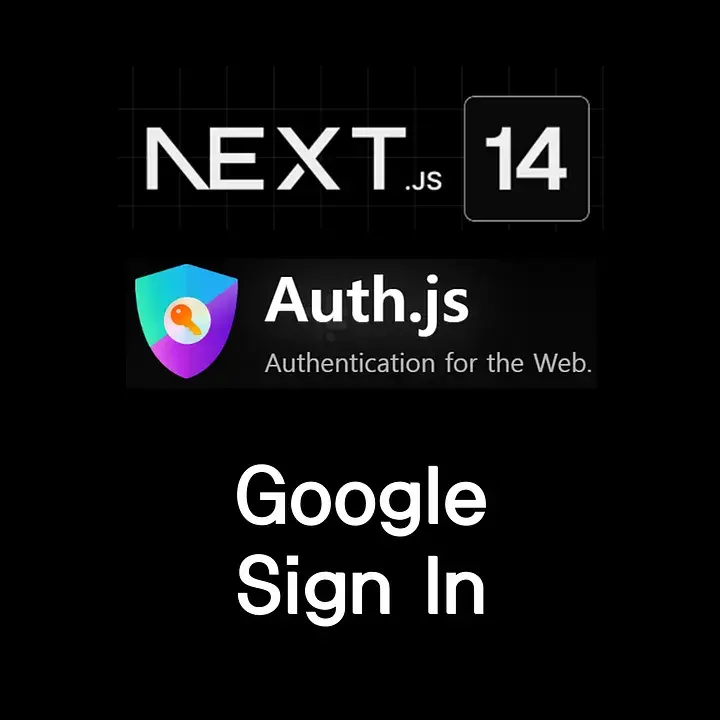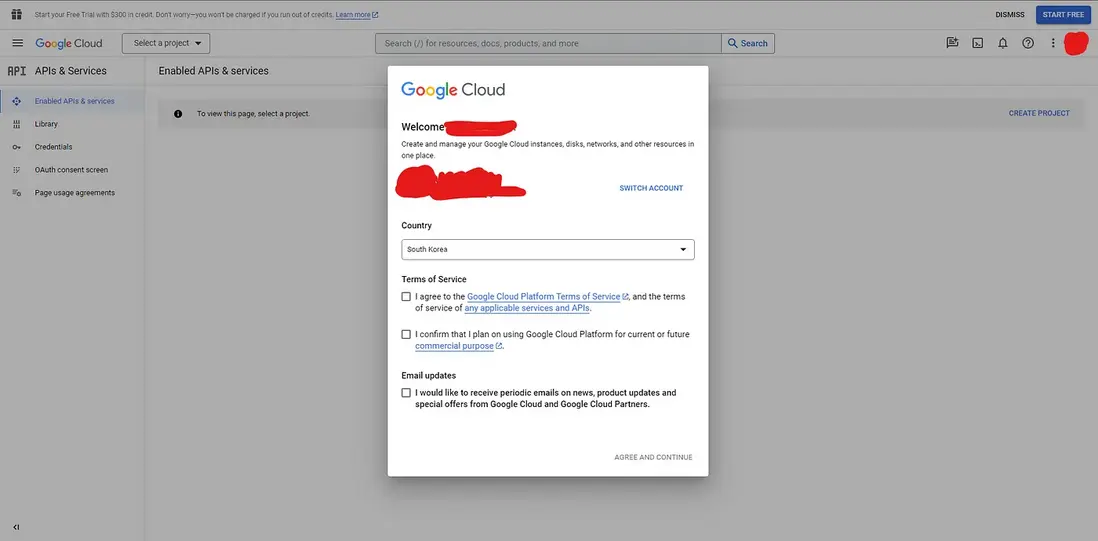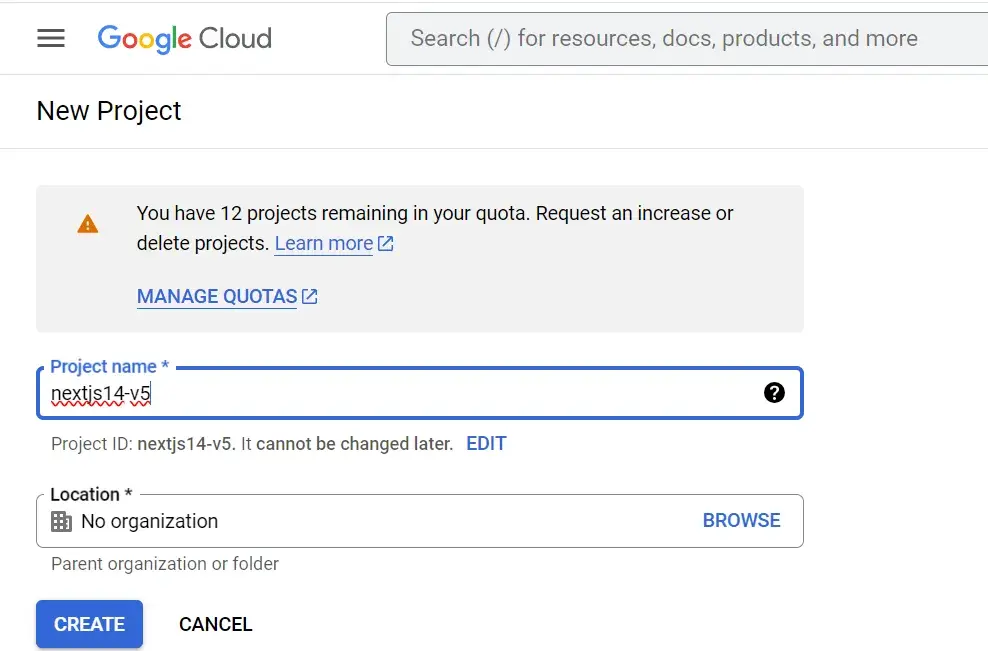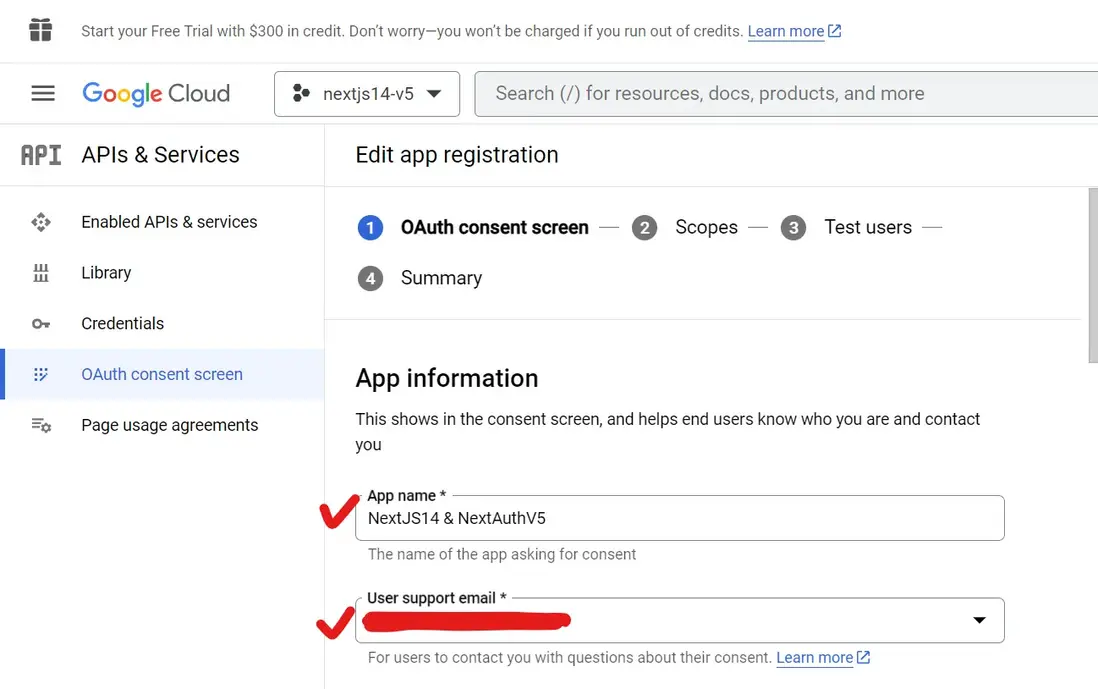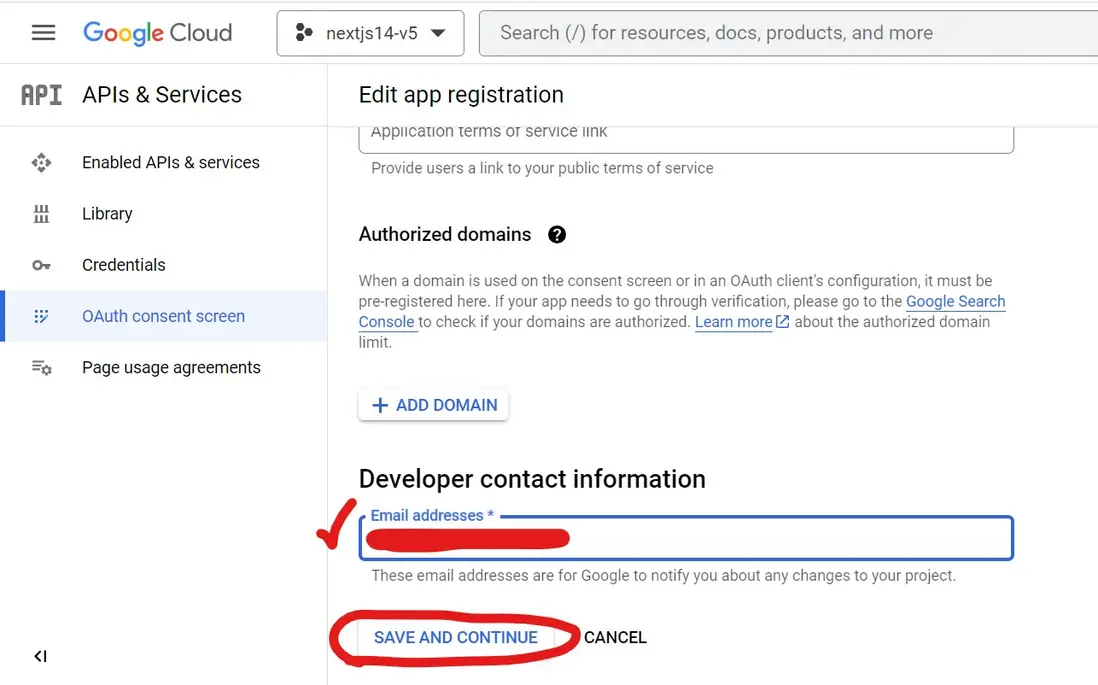- React Hook 深入淺出
- CSS技巧與案例詳解
- vue2與vue3技巧合集
- VueUse源碼解讀
Google Cloud 設置
訪問 https://console.cloud.google.com/apis
如果你是第一次使用Google Cloud,請確保同意服務條款。
按照以下步驟繼續:
根據你的喜好編輯項目名稱,然後點擊"CREATE"
你將被重定向到這個界面
👉 OAuth 同意屏幕
讓我們首先配置OAuth同意屏幕
如果你的組織中有內部測試人員,選擇Internal用户類型。否則繼續選擇External用户
編輯應用名稱並選擇用户支持郵箱,然後向下滾動直到找到"Developer contact information"(開發者聯繫信息)
填寫電子郵件地址,然後點擊"SAVE AND CONTINUE"(保存並繼續)按鈕
依次點擊剩餘步驟(Scopes、Test Users、Summary)的"SAVE AND CONTINUE"按鈕
👉 憑據
現在設置憑據
首先選擇應用類型為"Web"
然後填寫"Name"部分,並點擊Authorized redirect URIs下方的"ADD URI"按鈕。
在URIs部分填寫 http://localhost:3000/api/auth/callback/google ,然後點擊"CREATE"按鈕
🔴注意🔴
部署服務時,確保將URI修改為:
https://${部署域名URL}/api/auth/callback/google
以避免錯誤。
幾秒鐘後,你將收到OAuth客户端已創建的通知,並可以查看和複製"Client ID"和"Client Secret"
最後將"Client ID"和"Client Secret"添加到你的.env文件中
GOOGLE_CLIENT_ID = ${YOUR GOOGLE CLIENT ID}
GOOGLE_CLIENT_SECRET =${YOUR GOOGLE CLIENT SECRET}代碼實現
首先,在src/auth.ts中添加Google provider
// src.auth.ts
import NextAuth from 'next-auth';
import { authConfig } from './auth.config';
import Credentials from 'next-auth/providers/credentials';
import { User } from '@/lib/definitions';
import google from 'next-auth/providers/google'; // 添加導入
export const { handlers: { GET, POST }, auth, signIn, signOut, update } = NextAuth({
...authConfig,
providers: [
// **************************************************************
// 添加provider
google({
clientId: process.env.GOOGLE_CLIENT_ID ?? '',
clientSecret: process.env.GOOGLE_CLIENT_SECRET ?? '',
}),
// **************************************************************
Credentials({
async authorize(credentials) {
if (credentials.id && credentials.password) {
// 在這裏添加你的後端代碼
// let loginRes = await backendLogin(credentials.id, credentials.password)
let loginRes = {
success : true,
data : {
user: {
ID: "john_doe",
NAME: "John Doe",
EMAIL: "email@email.email",
},
}
}
// 登錄失敗
if (!loginRes.success) return null;
// 登錄成功
const user = {
id: loginRes.data.user.ID ?? '',
name: loginRes.data.user.NAME ?? '',
email: loginRes.data.user.EMAIL ?? '',
} as User;
return user;
}
return null;
},
})
],
callbacks: {
async session({ session, token, user }) {
session.user = token.user as User
return session;
},
async jwt({ token, user, trigger, session }) {
if (user) {
token.user = user;
}
if (trigger === "update" && session) {
token = {...token, user : session}
return token;
};
return token;
},
},
});在src/lib/actions.ts中創建一個在客户端調用的Google登錄方法
// src/lib/actions.ts
"use server"
import { signIn } from "../auth";
import { AuthError } from "next-auth";
...
export async function googleAuthenticate(
prevState: string | undefined,
formData: FormData,
) {
try {
await signIn('google');
} catch (error) {
if (error instanceof AuthError) {
return 'google log in failed'
}
throw error;
}
}確保src/app/api/auth/[…nextauth]/route.ts文件存在
// src/app/api/auth/[...nextauth]/route.ts
export { GET, POST } from "@/auth"
export const runtime = "edge"最後,在登錄頁面src/app/login/page.tsx中創建Google登錄按鈕
// src/app/login/page.tsx
"use client"
import { authenticate, googleAuthenticate } from "@/lib/actions" // 添加導入
import { useFormState } from "react-dom"
export default function Page() {
const [errorMsg, dispatch] = useFormState(authenticate, undefined)
const [errorMsgGoogle, dispatchGoogle] = useFormState(googleAuthenticate, undefined) //googleAuthenticate鈎子
return (
<div>
<h1>Log in Page</h1>
<form className="flex flex-col" action={dispatch}>
<input className="bg-blue-300 text-black" name="id"></input>
<input className="bg-yellow-300 text-black" name="password" type="password"></input>
<button>
Log In
</button>
<p>{errorMsg}</p>
</form>
{/* 添加Google登錄按鈕 */}
<br />
<form className="flex flex-col" action={dispatchGoogle}>
<button>
Google Sign In
</button>
<p>{errorMsgGoogle}</p>
</form>
{/* 添加Google登錄按鈕 */}
</div>
)
}現在使用npx next dev或npm run dev運行Next應用,訪問 http://localhost:3000/login 並點擊"Google Sign In"按鈕。你將被重定向到Google的OAuth同意屏幕。
成功登錄Google賬户後,你將被重定向回主頁,你的Google賬户詳細信息將打印在終端上!
源代碼和備註
https://github.com/youngjun625/nextauth14-nextauthv5?source=post_page-----3683d8fae69c--------------------------------
本文 GitHub https://github.com/qq449245884/xiaozhi 已收錄,有一線大廠面試完整考點、資料以及我的系列文章。











